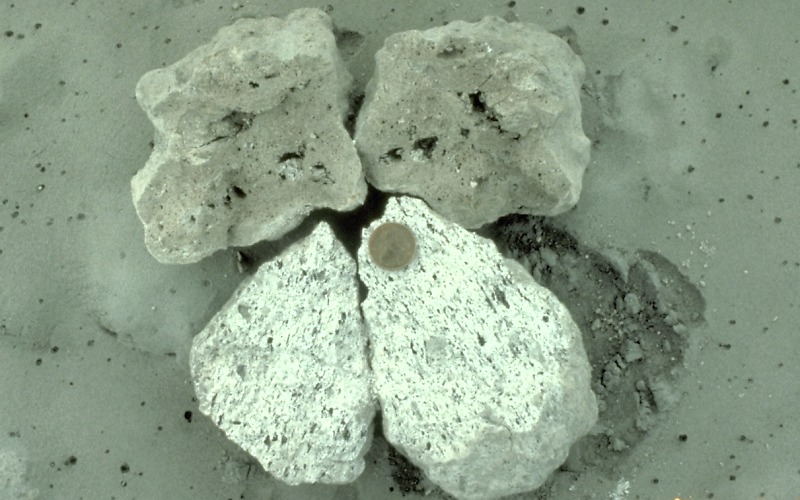- pumice
- ALASKA VOLCANO OBSERVATORY GLOSSARY
Light-colored, frothy volcanic rock, usually of dacite or rhyolite composition, formed by the expansion of gas in erupting lava. Commonly seen as lumps or fragments of pea-size and larger, but can also occur abundantly as ash-sized particles.\GLOSSARY OF VOLCANIC TERMSSolidified fragments of quenched, highly vesicular (>60%) silicic magma or lava (Cashman et al., 2000, p. 421). The highly vesicular nature of pumice results from large volumes of gas rapidly expanding within a rapidly cooling magma. The low density of pumice commonly permits it to float on water for extended periods of time. Hot pumice, however, has been shown experimentally to sink rapidly upon interacting with water (Whitham and Sparks, 1986 ).\USGS PHOTO GLOSSARY OF VOLCANIC TERMSPumice is a light, porous volcanic rock that forms during explosive eruptions. It resembles a sponge because it consists of a network of gas bubbles frozen amidst fragile volcanic glass and minerals. All types of magma (basalt, andesite, dacite, and rhyolite) will form pumice.Pumice is similar to the liquid foam generated when a bottle of pressurized soda is opened--the opening depressurizes the soda and enables dissolved carbon dioxide gas to escape or erupt through the opening. During an explosive eruption, volcanic gases dissolved in the liquid portion of magma also expand rapidly to create a foam or froth; in the case of pumice, the liquid part of the froth quickly solidifies to glass around the gas bubbles.\
 Photograph by W.E. Scott on 27 June 1991Dacitic pumice fragments erupted by Mount Pinatubo, Philippines, during an enormous eruption on 15 June 1991.
Photograph by W.E. Scott on 27 June 1991Dacitic pumice fragments erupted by Mount Pinatubo, Philippines, during an enormous eruption on 15 June 1991.
Glossary of volcanic terms. - University of Wisconsin Oshkosh. G. J. Hudak. 2001.
